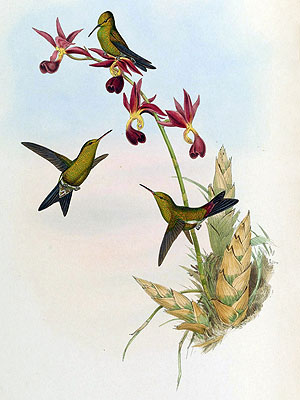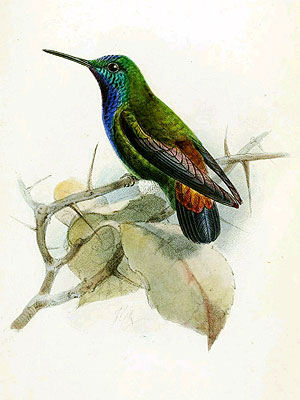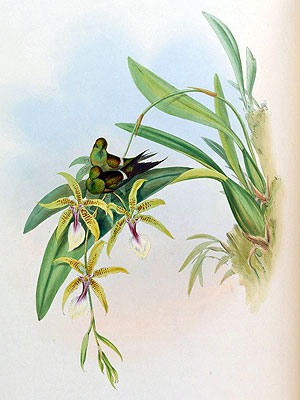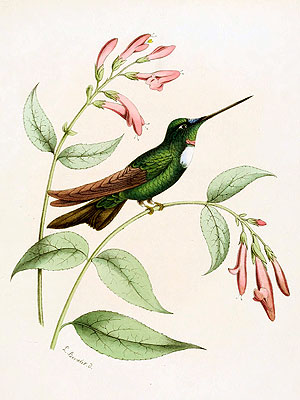Gould’s Emerald (Chlorostilbon elegans)
Gould’s Emerald, also known as the Caribbean Emerald, was described in 1860 based on a single specimen of unknown origin; however, it is somehow believed to have originated from the northern Bahamas or from Jamaica.
Thes species was thought to be a hybrid until 1999, when its status as a distinct species could be proven. [1]
Since no additional individual could ever be traced, Gould’s Emerald is clearly extinct now.
*********************
References:
[1] André-Alexander Weller: On types of trochilids in The Natural History Museum, Tring II. Re-evaluation of Erythronota (?) elegans Gould 1860: a presumed extinct species in the genus Chlorostilbon. Bulletin of the British Ornithologists’ Club 119(3): 197–202. 1999
*********************

(public domain)
*********************
edited: 30.10.2020




